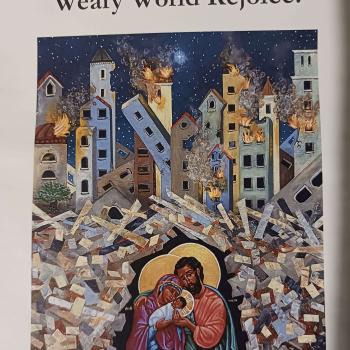From much of the news and punditry that has followed the election of Pope Francis, both Catholic and secular, one can easily gather the impression that the future of the Church hangs on the pope’s choice of footwear. This is hardly an exaggeration, but looking beneath the surface, perhaps it’s not quite as absurd as it sounds: for many Catholics, fixation on stylistic minutiae is a projection of larger hopes and fears for a new pontificate (a phenomenon that certainly did not begin with Pope Francis).
Among the reactions to Pope Francis thus far, I have observed two general conflicting assumptions, each with its own internal split: first, that he is leading us into a sweeping ecclesial revolution (proclaimed with either horror or vindictive glee); second and contrarily, that he is essentially no different from previous popes (proclaimed with either determined cynicism or dogmatic triumphalism). Neither assumption does him justice, because they both make him into a polarizing figure. The truth is more likely somewhere in between. No pope is identical to his predecessor in the experiences and approaches he brings to the office, but for this very reason, the differences can be seen as complementary.
I suspect that those who are inclined to read grandiose ecclesiological statements into how the pope chooses to accessorize, whether their preferences lean toward the elaborate or the austere, may be missing a broader and more personal trait that has less famously characterized Jorge Bergoglio since well before we began getting to know him as Pope Francis. The way he chooses to live is defined by an inclination toward downward mobility, simple living, or what Mennonites would call “living more with less” – from his now-famous choices of transportation and residence right down to, yes, his shoes.
It does not appear that he intends for this inclination to be read as a repudiation of Pope Emeritus Benedict or any other papal predecessors. Rather, I see it as simply a reflection of who he is, perhaps partly attributable to his Jesuit formation or to a Franciscan charism. Indeed, Francis’ recent visit to Benedict in which he embraced him as a brother shows his respect for his predecessor as well as his personal humility. His decision to celebrate Maundy Thursday Mass at a juvenile detention center has been widely discussed, both positively and negatively, as a break from tradition, and it was indeed unprecedented as a papal action, but it was also in continuity with his personal custom as Archbishop of Buenos Aires – a part of his long-standing witness of ministry to the marginalized, now more visibly amplified in his role as leader of a global Church.
For those who enjoy obsessing over the external details (and I admit that I myself have not always been entirely above the fray), I don’t mean to spoil the fun. Just remember to keep it in perspective. Ultimately, the future of the Church will depend much less on the presence or absence of a mozzetta or the placement of altar candles than on the extent to which we are inspired by the Holy Father’s example of humility and service toward a closer imitation of our Lord.















